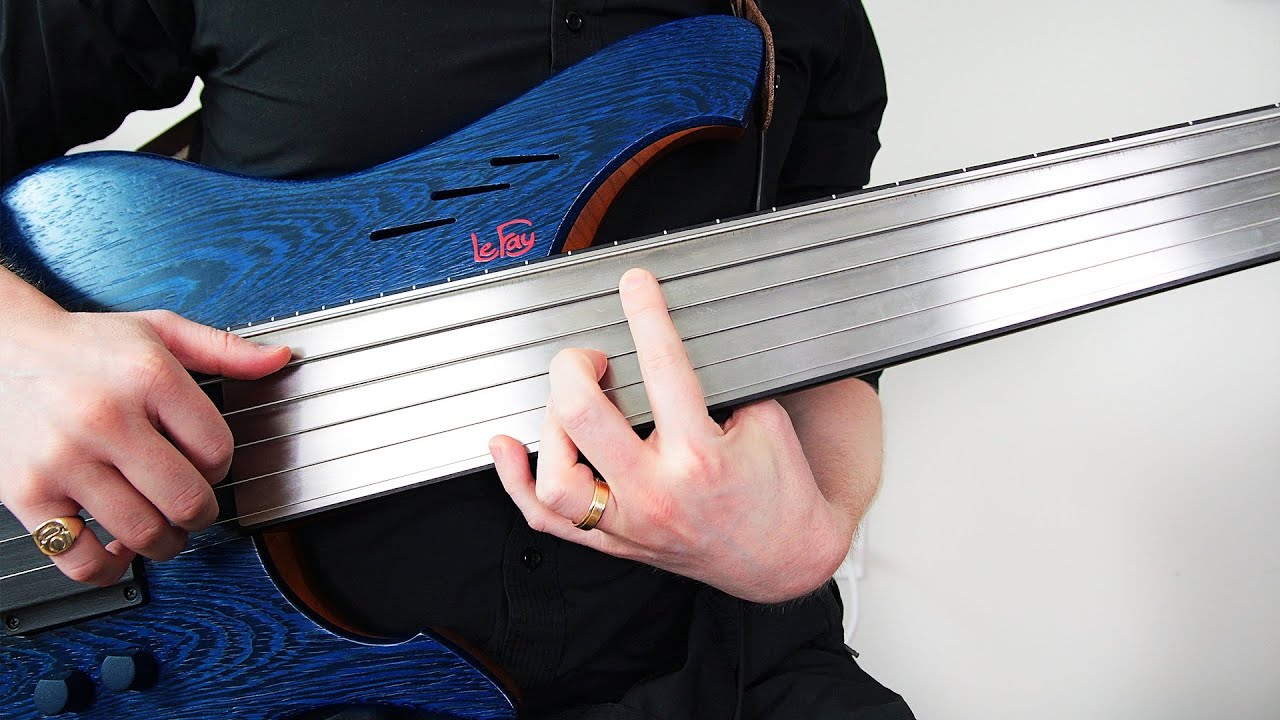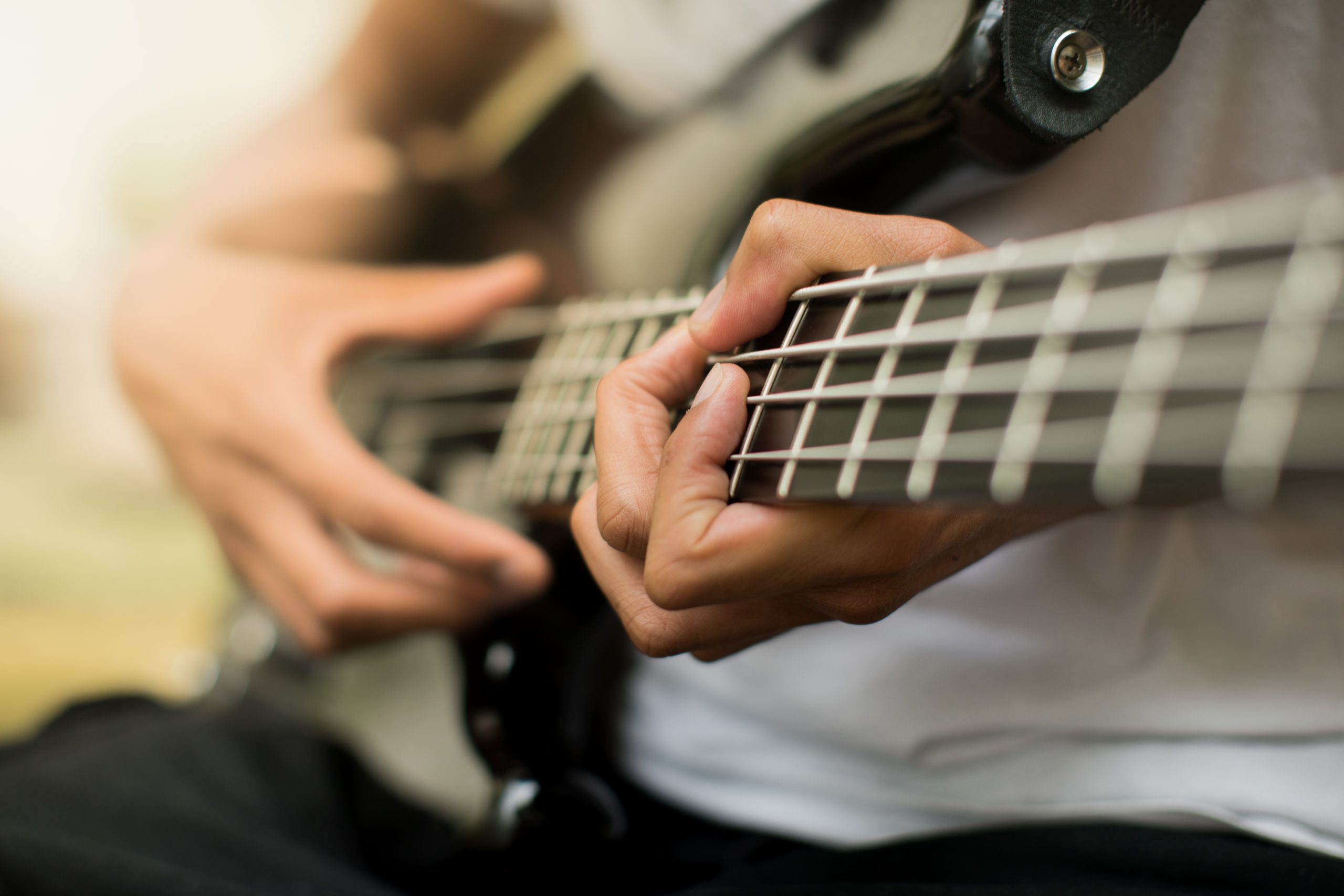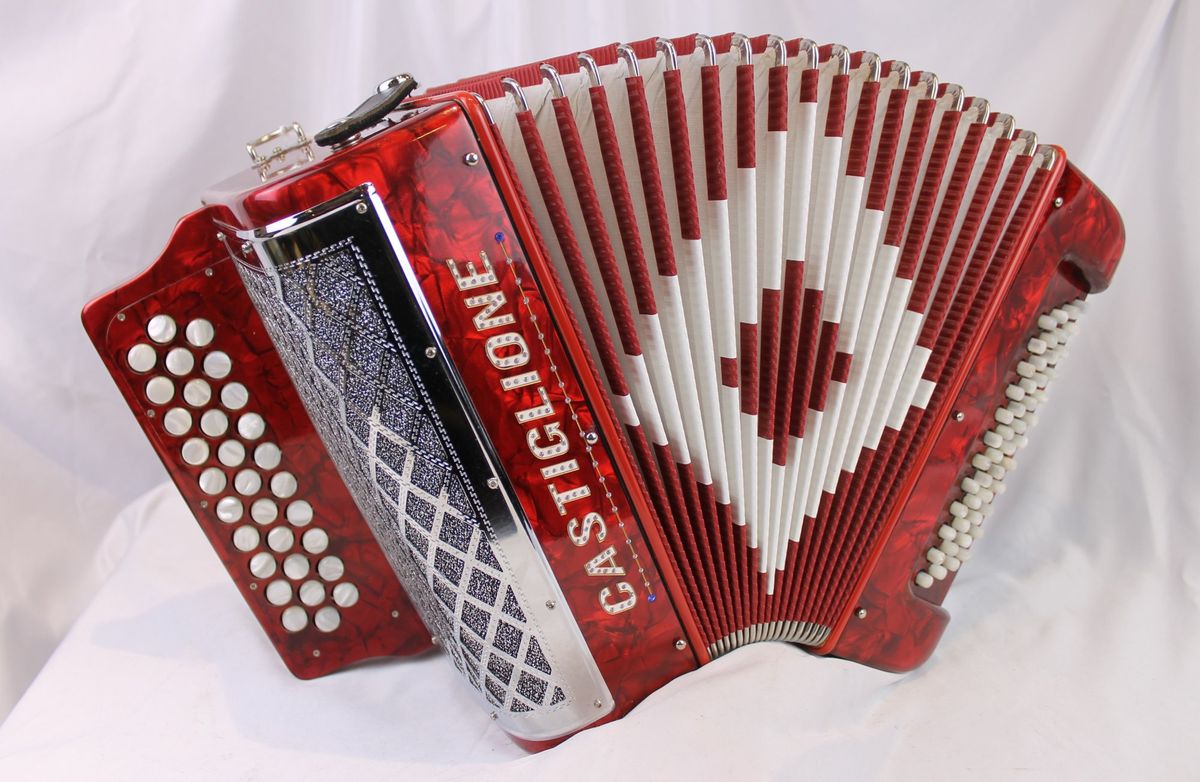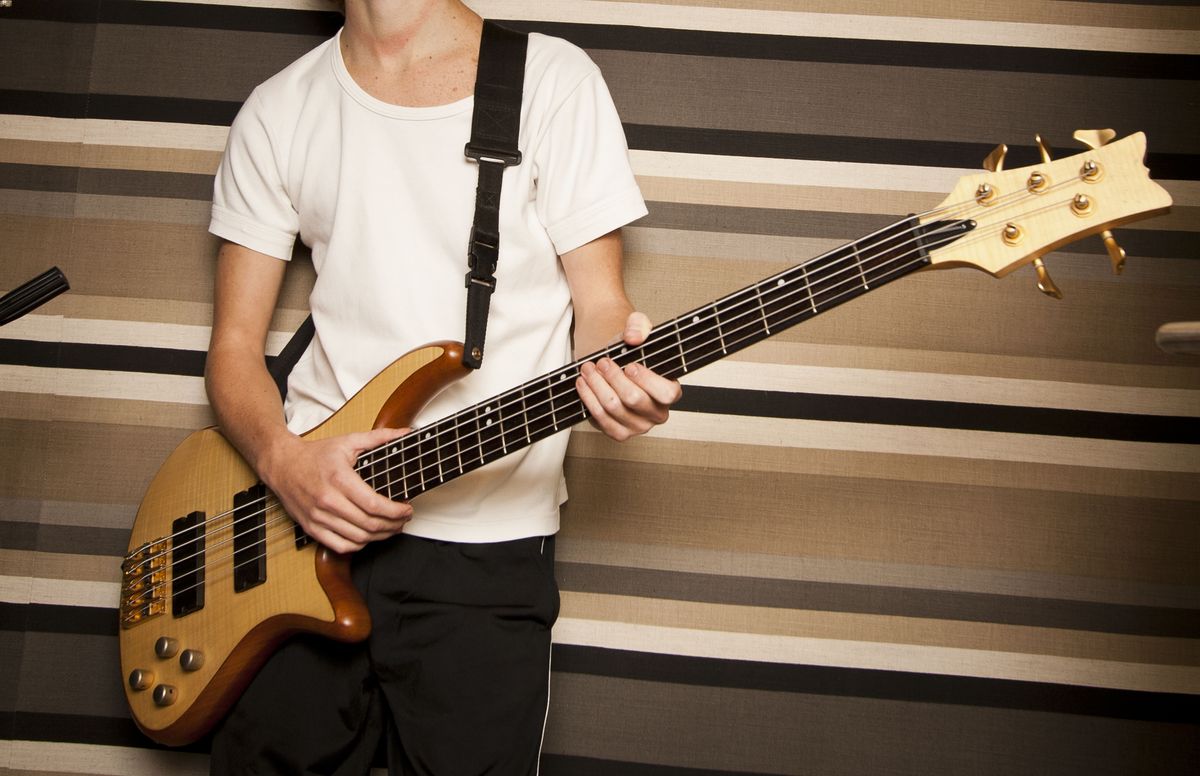Home>Instruments>Bass>How To Play Fretless Bass


Bass
How To Play Fretless Bass
Modified: January 22, 2024
Learn how to play the bass with our comprehensive guide. From essential techniques to mastering fretless bass, explore the world of bass playing.
(Many of the links in this article redirect to a specific reviewed product. Your purchase of these products through affiliate links helps to generate commission for AudioLover.com, at no extra cost. Learn more)
Table of Contents
Introduction
Welcome to the world of bass guitars, where the deep and resonant tones of the instrument provide a solid foundation for any musical composition. While most bass guitars come equipped with metal frets that help players find the correct notes, there is another option that offers a unique and expressive playing experience: the fretless bass.
A fretless bass is a bass guitar that doesn’t have the metal strips (frets) embedded on its fretboard. Without frets, the player has more freedom to slide, bend, and explore the notes in between the fixed pitches. This opens up a whole new world of possibilities for bass players seeking a distinct sound and the ability to add expressive techniques to their playing.
Playing a fretless bass requires a different approach than playing a fretted bass. It demands a refined technique and a keen ear for intonation. However, with practice and dedication, it can unlock a whole new level of creativity and musicality.
In this article, we will guide you through the basics of playing a fretless bass, covering topics such as finger placement and technique, playing notes and intervals, sliding and vibrato techniques, pitch accuracy and intonation, playing scales and arpeggios, tapping and harmonics, tips for improvisation, as well as maintenance and care.
Whether you’re a seasoned bass player looking to expand your skills or a beginner curious about the fretless bass, this article will provide you with the knowledge and techniques to get started and explore the depths of this fascinating instrument. So, let’s dive in and discover the wonders of playing the fretless bass!
What is a Fretless Bass?
A fretless bass is a variant of the traditional bass guitar that lacks the metal frets found on the fretboard of most bass guitars. Instead of the raised metal strips that divide the fretboard into specific note positions, a fretless bass has a smooth, uninterrupted fingerboard.
This absence of frets allows the player to have complete control over pitch and intonation, as there are no fixed positions to rely on. Each note must be accurately placed by the player’s finger position and their understanding of the instrument’s tonal characteristics.
Fretless basses are known for producing a distinctive and warm tone. The lack of frets eliminates the sharp attack and sustain that can be produced by fretted basses, resulting in a smoother, more mellow sound. This characteristic makes fretless basses particularly well-suited for genres such as jazz, fusion, and certain styles of world music.
One of the main advantages of playing a fretless bass is the ability to create microtonal slides and glissandos. The absence of frets allows for seamless transitions between notes and the opportunity to explore the spaces between the traditional Western scales. This gives the player a greater range of expression and the ability to incorporate nuanced techniques like vibrato and glissando.
However, playing a fretless bass requires a more precise technique and a well-trained ear for intonation. Without frets to guide the fingers, it is essential to develop a keen sense of pitch accuracy and finger placement. Regular practice and ear training exercises are crucial for developing the muscle memory needed to consistently hit the correct pitches.
Overall, a fretless bass offers a unique playing experience for bassists who seek a distinct sound and the freedom to explore the subtleties of pitch and expression. It is an instrument that encourages creativity and pushes the boundaries of traditional bass playing.
Getting Started
Before diving into the exciting world of playing a fretless bass, there are a few key considerations and steps to take to ensure a smooth and enjoyable learning experience.
1. Choose the Right Instrument: Selecting a high-quality fretless bass is crucial for your journey as a player. Look for a well-crafted instrument with a smooth fingerboard surface and reliable intonation.
2. Set Up Your Bass: Properly setting up your bass will contribute to its playability and sound. Ensure that the action (the height of the strings above the fingerboard) is comfortable and adjust any truss rod or bridge saddles if needed.
3. Develop Your Ear: Without the guidance of frets, it is essential to develop a keen sense of pitch. Practice ear training exercises, such as playing intervals, scales, and melodies by ear, to improve your ability to accurately hit the desired notes.
4. Use Visual Guides: Initially, you can use visual guides on the fingerboard to help find the correct pitch. Placing thin tape or markers at specific points can act as temporary “frets” until you develop the muscle memory required for precise finger placement.
5. Begin with Simple Melodies: Start by playing simple melodies and familiar tunes to get accustomed to the feel and nuances of the fretless bass. This will help you develop a sense of intonation and finger accuracy.
6. Focus on Finger Placement: Pay close attention to your finger placement on the fingerboard. Aim to position your fingers just behind the fret markers, using the pads of your fingertips to ensure proper contact and a clear tone.
7. Practice Sliding Techniques: Experiment with sliding between notes to explore the unique expressive capabilities of the fretless bass. Start with small slides and gradually incorporate longer and smoother glissandos into your playing.
8. Utilize Open Strings: Take advantage of open strings to add richness to your playing. The absence of frets allows for seamless transitions between open strings and stopped notes, creating a smooth and connected sound.
9. Seek Guidance: Consider seeking guidance from a bass teacher or experienced fretless bass player. They can provide valuable insights, offer technique tips, and help you overcome any challenges you may encounter.
10. Be Patient and Persistent: Playing a fretless bass requires time and practice to develop the necessary skills. Be patient with yourself, embrace mistakes as part of the learning process, and stay persistent in your practice routine.
By following these initial steps, you will set a strong foundation for your journey as a fretless bass player. So, grab your instrument, tune up those strings, and let’s embark on an exciting musical adventure!
Finger Placement and Technique
Mastering proper finger placement and technique is crucial for playing a fretless bass accurately and effectively. Here are some essential tips to help you get started:
1. Finger Placement: When playing a fretless bass, aim to place your fingers just behind the fret markers or visual guides. This ensures that you produce clear and accurate notes. Use the pads of your fingertips to press down on the strings, rather than the sides of your fingers.
2. Arching Technique: Maintain a slight arch in your fingers to prevent unwanted buzzing or muting of the strings. This arch allows for clean and sustained notes. Keep your fingers relaxed and avoid excessive tension.
3. Hand Position: Position your left hand comfortably on the neck of the bass. Avoid excessive pressure on the thumb, as it can limit your range of motion and cause strain. Allow your hand to float freely, with the thumb resting lightly on the back of the neck.
4. Sliding Technique: Sliding is a fundamental technique in fretless bass playing. To slide between notes, maintain a steady pressure while smoothly transitioning from one pitch to another. Practice sliding in both upward and downward directions to develop control and accuracy.
5. Vibrato Technique: Vibrato adds expressiveness and emotion to your playing. To achieve vibrato on a fretless bass, gently oscillate the pitch up and down by using small finger movements. Experiment with the speed and width of your vibrato to find your desired sound.
6. Finger Independence: Develop finger independence by practicing exercises that involve playing different notes simultaneously or performing intricate bass lines. This will improve your overall control and dexterity on the fretless bass.
7. Intonation: Since there are no fixed frets to rely on, intonation becomes crucial. Train your ear to recognize when a note is in tune or slightly off-pitch. Use reference pitches, such as a tuner or a keyboard, to develop your sense of intonation.
8. Practice Slowly: When learning new techniques or songs, start practicing at a slow tempo. This allows you to focus on accuracy, finger placement, and maintaining good technique. Gradually increase the speed as you become more comfortable.
9. Listen and Learn: Acquire inspiration from listening to experienced fretless bass players. Observe their finger placement, phrasing, and the subtle nuances they bring to their playing. Learning from and emulating these styles will help you refine your own technique.
10. Regular Maintenance: Keep your fretless bass in optimal condition by regularly cleaning the fingerboard and changing strings as needed. Clean the fingerboard with a soft cloth and apply a small amount of lemon oil to keep it smooth and moisturized.
By focusing on proper finger placement and technique, you’ll develop the necessary control and precision to fully exploit the expressive capabilities of the fretless bass. Practice regularly, pay attention to details, and enjoy the journey of becoming a skilled fretless bassist!
Playing Notes and Intervals
Playing notes and intervals on a fretless bass requires precision and a keen ear for pitch. Without the visual aid of frets, it becomes essential to rely on finger placement and a developed sense of intonation. Here are some tips and techniques to help you navigate the world of notes and intervals on a fretless bass:
1. Learn the Positions: Familiarize yourself with the positions of the notes on the fingerboard. Start by understanding the placement of the natural notes (A, B, C, D, E, F, G) without worrying about sharps or flats.
2. Use Reference Points: Visualize the positions of the notes relative to reference points on the fingerboard, such as the dots or markers on the side of the neck. This will give you a rough idea of where to place your fingers.
3. Develop Muscle Memory: Train your fingers to find the correct positions by repeating scales, melodies, and exercises regularly. With time, you’ll develop muscle memory that will make finding notes more intuitive.
4. Work on Intonation: Pay close attention to the pitch accuracy of each note you play. Train your ear to identify when a note is in tune or slightly off. Use reference pitches or a tuner to help you develop your sense of intonation.
5. Practice Slides and Glissandos: Sliding between notes is a key technique on a fretless bass. Start with small slides and gradually incorporate longer and smoother glissandos. This will enhance your expressiveness and add a unique flair to your playing.
6. Explore Microtonal Playing: One advantage of the fretless bass is the ability to explore microtones and play notes that fall between the pitches of the Western scale. Experiment with sliding, bending, and using quarter tones to add depth and richness to your playing.
7. Visualize the Intervals: Practice playing different intervals, such as thirds, fourths, fifths, and octaves. Visualize the distance between the notes on the fingerboard and develop a sense of how they sound and feel under your fingers.
8. Incorporate Chromaticism: Use chromatic notes to add tension and color to your basslines. Experiment with playing passing tones and chromatic approaches to create interesting and melodic phrases.
9. Practice Playing in Different Registers: Explore playing notes and intervals in different areas of the fingerboard to take advantage of the varying timbres and tonal qualities available on a fretless bass.
10. Transcribe and Learn Songs: Transcribing and learning songs by ear is an excellent way to train your ears and apply what you’ve learned about notes and intervals. It will also expose you to different musical styles and techniques.
Remember, playing notes and intervals on a fretless bass requires patience, practice, and a sharp ear. Embrace the challenge, be open to experimentation, and enjoy the process of discovering the wide range of musical possibilities available on this unique instrument.
Sliding and Vibrato Techniques
Sliding and vibrato are essential techniques in fretless bass playing that can add depth, expressiveness, and a unique character to your music. These techniques allow you to explore the fluidity of pitch and create dynamic and emotive performances. Here’s a breakdown of sliding and vibrato techniques on the fretless bass:
Sliding:
- Small Slides: Begin by incorporating small slides between adjacent notes. This technique involves smoothly transitioning from one note to the next by gradually shifting your finger position along the string. Start slow and gradually increase the length and speed of the slides as you gain more control.
- Long Slides: Challenge yourself by integrating longer and more dramatic slides. These slides can span several positions on the fingerboard and bring a sense of movement and excitement to your playing. Experiment with slides in different directions, such as ascending and descending, to expand your musical vocabulary.
- Glissandos: Glissandos are continuous slides that span a range of notes. They involve sliding either up or down the strings while maintaining a consistent pressure on the fretboard. Glissandos can be utilized to create dramatic, atmospheric, or melodic effects in your bass lines.
Vibrato:
- Finger Vibrato: Finger vibrato is executed by oscillating the pitch of a sustained note by slightly bending the string back and forth using your fretting finger. Start by applying gentle, controlled movements and gradually increase the speed and width of the vibrato for a more pronounced effect.
- Wrist Vibrato: Wrist vibrato involves utilizing your wrist to generate the vibrato motion rather than your fingers. This technique can add a wider and more expressive vibrato to your playing. Experiment with different wrist movements and finger positions to find a comfortable and natural approach.
- Combining Vibrato and Slides: Incorporate vibrato into your sliding techniques to add an extra layer of expressiveness. Experiment with applying vibrato during slides to emphasize certain notes or to create a smooth and expressive transition between pitches.
As with any technique, practicing sliding and vibrato regularly is key to developing control, accuracy, and musicality. Start by incorporating these techniques into simple scales, melodies, and bass lines. As you become more comfortable, explore their applications in different musical styles and genres.
Listening to experienced fretless bass players and studying their techniques can provide valuable insight and inspiration. Pay attention to their use of sliding and vibrato in their performances and try to emulate their nuances and expressiveness in your own playing.
Remember, sliding and vibrato techniques are tools for self-expression. Allow yourself the freedom to experiment and find your own unique voice on the fretless bass. Practice, explore, and enjoy the journey of bringing depth and emotion to your music with these captivating techniques!
Pitch Accuracy and Intonation
Pitch accuracy and intonation are vital aspects of playing a fretless bass. Without the visual aid of frets, it is crucial to develop a keen ear and precise finger placement to ensure that each note is played in tune. Here are some tips and techniques to help you improve your pitch accuracy and intonation:
1. Ear Training: Train your ear by regularly listening to and identifying different pitches. Use reference tones from a tuner or a keyboard to help you develop a sense of pitch. Practice singing or humming along with scales and melodies to reinforce your understanding of intervals.
2. Play with a Reference: When practicing, play along with a recording, a metronome, or another instrument that is in tune. This will help you compare your pitch to a fixed reference and make corrections as necessary.
3. Use Harmonics: Utilize harmonics as a reference for intonation. Harmonics produce pure and clear tones that can help you identify whether your finger placement is accurate. Experiment with harmonics on different strings and positions of the fingerboard.
4. Play in Different Registers: Become familiar with playing in different registers of the fretless bass. Each position on the fingerboard may require slight adjustments in finger placement to account for the instrument’s tonal characteristics. Practice scales and melodies in various positions to develop a consistent pitch accuracy.
5. Vibrato as a Tuning Tool: Use vibrato as a means to fine-tune your notes. By gently oscillating the pitch, you can make micro-adjustments to achieve perfect intonation. Experiment with different vibrato speeds and widths until you find the sweet spot.
6. Record and Analyze: Record your playing and listen back to assess your pitch accuracy. This will allow you to identify areas that require improvement and fine-tuning. Pay attention to any noticeable discrepancies in intonation and work on correcting them in subsequent practice sessions.
7. Develop Muscle Memory: Develop muscle memory through repetitive practice. Regularly play scales, arpeggios, and exercises to solidify finger placement and intonation. Gradually increase the complexity and speed of the exercises as your muscle memory strengthens.
8. Work on Sustaining Notes: Practice sustaining single notes for longer durations and listen closely to their pitch stability. Train your fingers to make subtle adjustments to maintain the correct pitch throughout the duration of the notes.
9. Collaborate with Other Musicians: Playing with other musicians provides opportunities to fine-tune your intonation. Listen and adjust your playing in relation to other instruments to achieve a harmonious and in-tune sound. It will also help develop your sense of ensemble playing.
10. Seek Feedback: Seek feedback from experienced musicians, teachers, or fellow bass players. They can provide valuable insights and guidance on improving your pitch accuracy and intonation.
Remember, developing pitch accuracy and intonation on a fretless bass takes time and consistent practice. Be patient, embrace the process, and celebrate the improvements along the way. With dedication and attention to detail, you will continue to refine your skills and achieve greater control over your instrument’s intonation.
Playing Scales and Arpeggios
Mastering scales and arpeggios is essential for any bass player, and it holds true for fretless bass as well. These foundational exercises provide the building blocks for creating basslines, solos, and improvisations. Here are some tips to help you navigate scales and arpeggios on your fretless bass:
1. Learn the Basic Patterns: Familiarize yourself with the basic patterns of major, minor, pentatonic, and other commonly used scales. Start by playing these scales in one octave and gradually expand to cover the entire range of your instrument.
2. Focus on Finger Placement: Pay close attention to your finger placement to ensure accurate and in-tune notes. Use the pad of your fingertips to press down on the strings just behind the desired fret positions.
3. Practice Slowly and Accurately: Take your time when practicing scales and arpeggios. Play each note deliberately and aim for evenness in volume and tone. Focus on accuracy rather than speed, and gradually build up your speed as you become more comfortable.
4. Use a Metronome: To develop your sense of timing and to build your rhythm, practice scales and arpeggios with a metronome. Start slowly and gradually increase the tempo as your proficiency improves.
5. Experiment with Articulation: Vary your articulation techniques when playing scales and arpeggios. Explore using different dynamics, accents, and note durations to add interest and musicality to your playing.
6. Practice in Different Positions: Play scales and arpeggios in different positions on the fingerboard to become comfortable navigating the entire range of your instrument. This will help you develop a comprehensive knowledge of the fretboard and strengthen your muscle memory.
7. Incorporate Slides and Vibrato: Experiment with incorporating slides and vibrato into your scale and arpeggio playing. Slides can add smooth transitions between notes, while vibrato can bring expressiveness and depth to your phrases.
8. Play Scale and Arpeggio Variations: Once you are comfortable with the basic patterns, explore different variations of scales and arpeggios. This can include chromatic approaches, modal scales, or playing scales in different rhythmic patterns.
9. Practice Chromatic Exercises: Chromatic exercises are a great way to enhance your finger dexterity and improve your fretless bass technique. Incorporate chromatic passages, chromatic scales, and chromatic approaches into your practice routine.
10. Transpose and Apply to Music: Once you have mastered scales and arpeggios in one key, work on transposing them to other keys. Additionally, apply your scale and arpeggio knowledge to real music by improvising over backing tracks or playing along with your favorite songs.
Consistent and focused practice is key to mastering scales and arpeggios on your fretless bass. Make sure to practice them in different musical contexts and experiment with different rhythms, articulations, and dynamics. By dedicating time to these foundational exercises, you will enhance your overall bass playing and open up a world of creative possibilities.
Tapping and Harmonics
Tapping and harmonics are advanced techniques that can add a unique and captivating flavor to your fretless bass playing. These techniques allow you to create mesmerizing sounds and unlock a wide range of harmonic possibilities. Here’s a breakdown of tapping and harmonics on the fretless bass:
Tapping:
- Two-Handed Tapping: Two-handed tapping involves using both hands to tap the strings on the fingerboard. With your fretting hand, tap the notes on the fingerboard while simultaneously using your picking hand to create percussive sounds, either by tapping on the body of the bass or muting the strings.
- Single-Handed Tapping: Single-handed tapping allows you to tap notes using your picking hand while the fretting hand provides support and control of the strings. This technique can create fast and intricate melodic lines, and it’s commonly used in virtuosic bass playing.
- Tapping Arpeggios: Experiment with tapping arpeggios by tapping out the individual notes of a chord in a rapid succession. This technique produces a rich and cascading effect that can add depth and complexity to your basslines.
Harmonics:
- Natural Harmonics: Natural harmonics are created by lightly placing your finger directly above specific nodes on the string without pressing it down to the fingerboard. Gently pluck the string to produce bell-like, high-pitched tones. Explore the different harmonics available on each string and experiment with their placement to create ethereal and shimmering sounds.
- Pinch Harmonics: Pinch harmonics, also known as artificial harmonics, are achieved by simultaneously plucking the string with your picking hand and lightly touching it with your fretting hand. This creates a controlled feedback-like sound with a distinct and cutting quality. Experiment with different finger placements and hand positions to produce a range of harmonics.
- Artificial Harmonics: Artificial harmonics are created by fretting a note and then lightly touching the string twelve frets above the fretted note. This technique allows you to produce harmonics on any fret, adding a unique and melodic texture to your playing.
When incorporating tapping and harmonics into your fretless bass playing, it’s important to remember to maintain good technique and control. Here are a few tips:
- Start slowly and practice each technique separately before combining them.
- Use a metronome to develop precision and timing.
- Experiment with different finger placements, angles, and pressures to achieve the desired sound.
- Combine tapping and harmonics with other techniques, such as slides and vibrato, to create dynamic and expressive performances.
- Listen to experienced players utilizing these techniques and transcribe their solos to learn from their approach and incorporate their ideas into your playing.
Tapping and harmonics can elevate your fretless bass playing to new levels of creativity and sonic exploration. With practice and experimentation, you’ll be able to incorporate these techniques seamlessly into your basslines and solos, adding depth, flair, and a touch of magic to your music.
Tips for Improvisation
Improvisation is a spontaneous and creative art form that allows you to express yourself freely on the fretless bass. Whether you’re jamming with other musicians or creating your own basslines, improvisation is a valuable skill to cultivate. Here are some tips to help you improve your improvisational abilities:
1. Know Your Scales: Familiarize yourself with various scales, including major, minor, pentatonic, blues, and modes. Understand their patterns and how they relate to different musical contexts. This knowledge will provide a foundation for improvising over different chord progressions.
2. Explore the Fretboard: Experiment with playing scales and arpeggios in different positions and octaves on the fretless bass. This will expand your range and allow you to access a wider variety of notes when improvising.
3. Listen and Learn: Develop your ear by actively listening to different genres and styles of music. Pay attention to how bassists and other musicians improvise, noting their phrasing, melodic choices, and note selection. Take inspiration from their improvisational techniques and incorporate them into your own playing.
4. Break Free from Patterns: While it’s important to learn scale patterns, don’t rely on them exclusively. Experiment by breaking away from patterns and exploring different note combinations, intervals, and rhythmic variations. This will add spontaneity and uniqueness to your improvisations.
5. Use Space and Silence: Don’t overcrowd your improvisations with too many notes. Embrace the power of silence and the strategic use of space. Allowing for pauses and rests can create a more dynamic and intriguing musical conversation.
6. Play with Dynamics: Incorporate a wide range of dynamics into your improvisations. Experiment with playing softly and gradually building up to louder, more intense phrases. Use accents and varying levels of volume to add emotion and depth to your playing.
7. experiment with Rhythm: Focus on rhythm and groove when improvising. Play with different rhythmic patterns and subdivisions to create a rhythmic foundation for your improvisation. Support and interact with other musicians by locking in with the drummer and other rhythm section members.
8. Develop Your Own Vocabulary: Build your own musical vocabulary by transcribing and learning bass solos from your favorite artists. Analyze their melodic choices, phrasing, and rhythmic approach. Incorporate these elements into your own improvisations and eventually develop your unique voice on the fretless bass.
9. Practice Improvising with Backing Tracks: Utilize backing tracks or play along with recordings to simulate real-life musical settings. This will help you develop your improvisational skills in the context of different chord progressions, styles, and tempos.
10. Embrace Mistakes and Take Risks: Remember that improvisation is about exploring and taking risks. Don’t be afraid to make mistakes. Learn from them, and use them as opportunities to discover new musical ideas and unlock your creativity.
Improvisation on the fretless bass can be a thrilling and rewarding experience. By incorporating these tips into your practice routine and embracing the spontaneity of the moment, you’ll develop the confidence and skills to freely express yourself through improvisation.
Maintenance and Care
Proper maintenance and care are crucial for keeping your fretless bass in optimal condition and ensuring that it continues to deliver the best possible sound and performance. Here are some essential tips to help you maintain and care for your instrument:
1. Cleaning: Regular cleaning is essential to keep your fretless bass in good shape. Wipe the fingerboard and body of your bass with a soft, lint-free cloth after each playing session to remove sweat, dirt, and residue. Avoid using any harsh cleaning agents that may damage the wood or finish.
2. Fingerboard Maintenance: The fingerboard requires special attention on a fretless bass. Apply a small amount of lemon oil to a cloth and gently rub it onto the fingerboard to help clean and condition it. This prevents the wood from drying out and cracking. Be sure to follow the manufacturer’s instructions and use only a minimal amount of oil.
3. String Care: Strings on a fretless bass can last longer than on a fretted bass since they’re not being pressed against metal frets. Nevertheless, it’s still essential to clean them regularly to remove dirt and oil build-up. Use a cloth to wipe the strings after playing to prolong their lifespan and maintain their tonal quality.
4. Bridge and Nut: Periodically check the bridge and nut to ensure they are in good condition. Clean any debris or dust that may accumulate in these areas with a soft brush or cloth. If you notice any cracks or sharp edges, consult a professional luthier to have them repaired or replaced.
5. Truss Rod Adjustment: The truss rod helps maintain the proper neck relief of your bass. If you notice any changes in the neck’s curvature or experience fret buzz, consult a professional for truss rod adjustments. Attempting to adjust it yourself without proper knowledge and tools can cause irreversible damage.
6. Storage and Climate Control: Store your fretless bass in a suitable case or gig bag when not in use to protect it from accidental damage and environmental changes. Avoid exposing your instrument to extreme temperatures, humidity, or direct sunlight, as these can cause warping, cracking, or finish damage.
7. Regular Checkups: Schedule regular checkups with a qualified guitar technician or luthier to inspect your fretless bass. They can perform routine maintenance, such as adjusting the action, checking the electronics, and addressing any potential issues before they become major problems.
8. String Replacement: When it’s time to replace your bass strings, consider taking it to a professional for proper installation. They can determine the correct string height and ensure even tension across the neck, which contributes to better playability and intonation.
9. Play with Clean Hands: Wash your hands before playing to remove oils, dirt, and debris that can transfer onto the strings and fingerboard. This helps maintain the cleanliness and longevity of the instrument’s surfaces.
10. Love and Enjoy: Finally, love and enjoy your fretless bass! Treat it with care, play it regularly, and have fun exploring the unique tonal possibilities it offers. The more you connect with and appreciate your instrument, the more it will inspire you to create beautiful music.
By following these maintenance and care tips, you can ensure that your fretless bass stays in excellent condition, allowing you to enjoy its exceptional sound and playability for years to come.
Conclusion
Congratulations on embarking upon the exciting journey of playing the fretless bass! Throughout this article, we have explored the fundamentals, techniques, and tips to help you become a skilled and expressive fretless bass player.
From understanding the unique characteristics of the fretless bass to mastering finger placement, sliding, vibrato, and improvisation, you have gained the knowledge and tools to embark on this fascinating musical adventure. Remember to practice regularly, focus on intonation, and develop your ear to achieve precision and control over pitch.
As you continue to explore the fretless bass, don’t be afraid to experiment and discover your own unique style and voice. The absence of frets on the fingerboard offers a vast array of possibilities to express yourself creatively.
Additionally, proper maintenance and care are essential for preserving the quality and longevity of your fretless bass. Practice regular cleaning, fingerboard maintenance, and string care to ensure that your instrument remains in optimal condition.
Lastly, always strive to connect with your instrument on a deeper level. Express your emotions through the powerful and resonant tones of the bass. Open yourself to new musical ideas, listen to experienced players, seek guidance, and find joy in the process of learning and playing the fretless bass.
So, take what you’ve learned, practice with dedication and passion, and embrace the beauty of the fretless bass. Let your fingers glide across the smooth fingerboard, creating captivating melodies and captivating rhythms that stir the soul. Enjoy your musical journey and the endless possibilities of the fretless bass!











